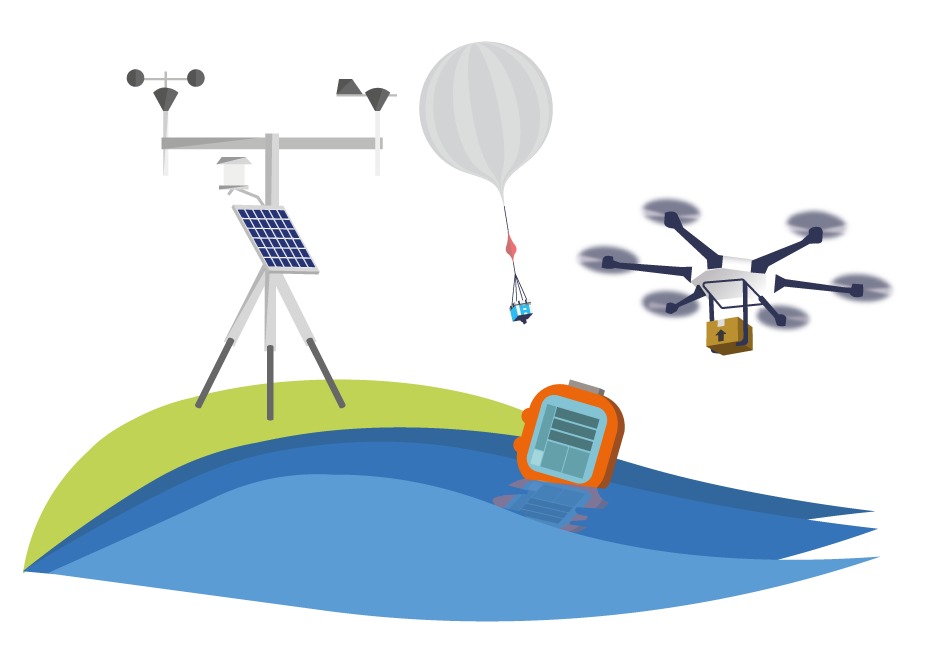In this post we’re exploring your options for wireless connectivity of IoT devices, and the differences between NB-IoT and LoRaWAN. We’ll see how LoRaWAN and satellite connectivity can work together to maximize coverage, connectivity, and cost control.
Why choose LPWAN as a wireless solution for widespread IoT devices?
This chart, courtesy of You Li, outlines the major technologies in place for the wireless connection of IoT devices. In short, if you need to transmit data wirelessly between sensors and gateways over a large area, you have the choice of cellular or LPWAN connectivity.
Cellular, however, is both expensive and power hungry, and carries the risk of the technology being retired (e.g. 2G and 3G networks being phased out). Further, only 15% of the Earth’s surface is covered by cellular networks (source: World Economic Forum).
LPWAN (Low Power Wide Area Network) technologies have a lot of plus points: battery lives that span years; low cost; long range. Only very small amounts of data can be transmitted, but that’s adequate for environmental monitoring, asset management, tracking, metering etc.
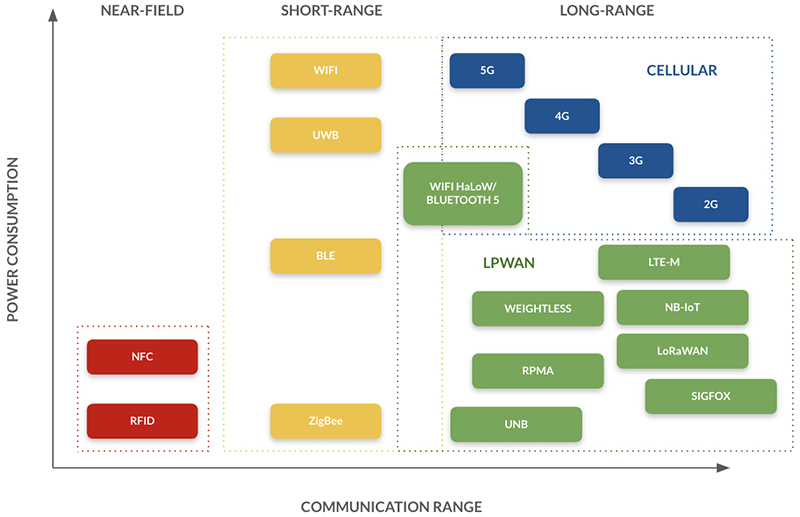
Within LPWAN there are many technologies and standards, and IoTForAll has an excellent article explaining the pros and cons of the main options. We’re summarising the most popular choices here.
LTE-M is USA-centric, but offers higher data rates than many, and cuts across borders with ease, so it’s good for mobile applications.
NB-IoT transmits less data but equally consumes less power; it’s generally lower cost, and more widely available outside of the USA than LTE-M. However it’s not yet effective for mobile use cases as it requires roaming agreements between different telco providers. It communicates with the cloud directly, unlike LoRaWAN which requires end nodes to transmit data to a gateway first, and from there to the cloud; this makes networking of NB-IoT easier (source). NB-IoT also offers the greatest wireless reach, with devices able to communicate wirelessly over distances as great as 22 km. This is dependent on location – NB-IoT works well in cities but is less stable in rural areas where cellular / wifi connectivity is limited.
LoRaWAN – which combines the standard for the physical layer (called LoRa), plus the MAC layer and application standards – is also typically used for static communication scenarios such as soil moisture sensors, water levels and quality, gas / oil pipeline monitoring and glacial melt. Because public networks extend across broad geographic regions, LoRaWAN can be used for some mobile IoT applications such as fleet monitoring and animal tracking too. Telecom operators operate public LoRa networks, but you can also set up your own private network relatively inexpensively. Wirelessly connecting devices up to 16 km apart, LoRaWAN has no dependence on cellular or wifi, and so offers relatively stable coverage in rural and remote areas (source).
&npbs;
LPWA connection share by technology, 2020-2025
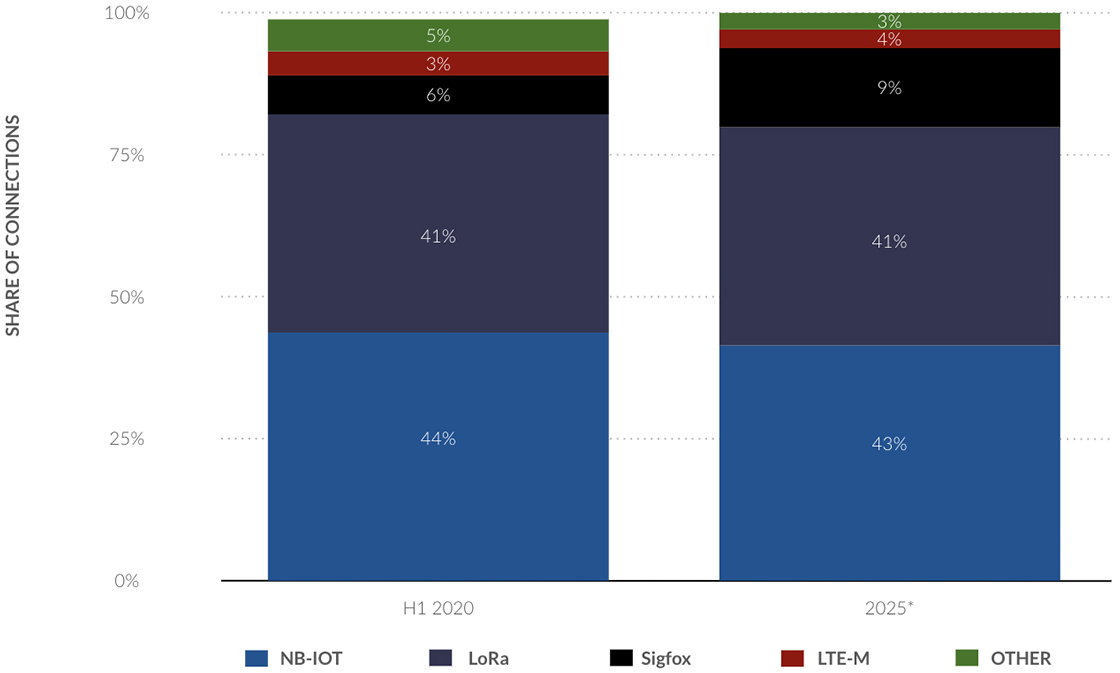
By 2025, it’s anticipated that on a global scale, NB-IoT and LoRa will, between them, have 84% of the share of LPWA connections (Statista).
Where does satellite IoT come into the picture?
All of the LPWAN technologies need to be able to transmit their data to the cloud, and if they operate far outside of cellular or wifi coverage – i.e. in very remote locations such as mountains, oceans, deserts and forests – they need a mechanism for data backhaul.
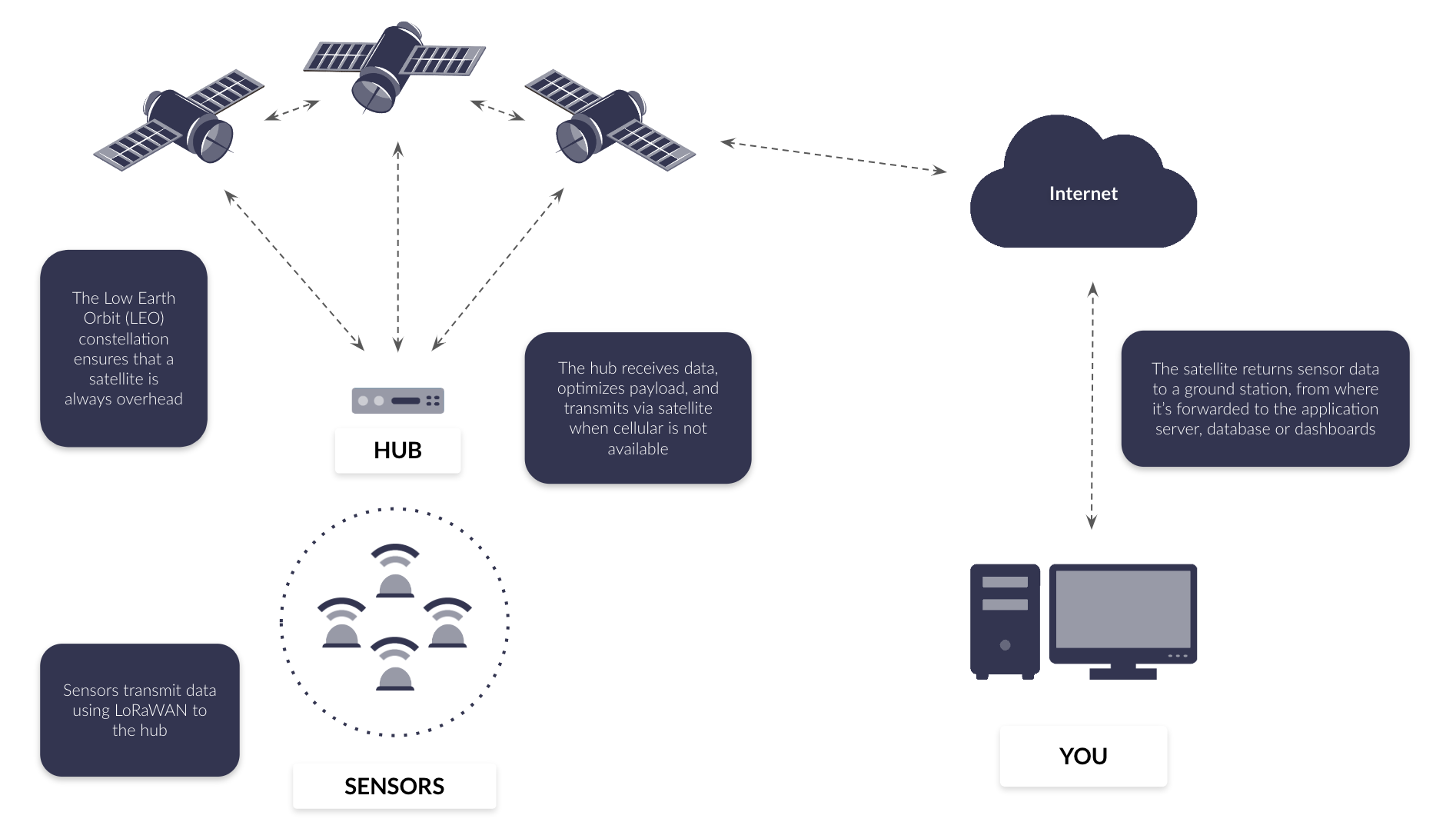
In this example, sensors are transmitting data using LoRaWAN to the hub, or gateway. The hub receives the data, optimizes the payload (this is important to keep data transmission costs down), and will transmit the data via satellite if cellular is not available.
In this example, we’re using a satellite constellation in Low Earth Orbit – Iridium – which has 66 satellites overhead, ensuring that 100% of the globe can connect with their satellite network. The satellite returns the sensor data to a ground station, from where it’s forwarded to the application service, database or dashboards.
Iridium is a great choice, but there’s no reason in principle why you couldn’t also transmit to a geostationary satellite network such as Inmarsat, as long as your gateway or hub has line-of-sight to the satellite.
One of Ground Control’s customers is using this method to capture sensor data from a remote reservoir in Wales, UK. The automated monitoring system is designed to alert engineers to potential equipment failures, to minimize the need for unplanned maintenance visits. Challenges included the lack of mobile phone coverage, no provision of a telephone line or ADSL connection, and a wide area distribution of a large number of sensors. A cabled solution was quickly ruled out due to the logistical challenges, time and cost implications. The solution: using satellites to backhaul LoRaWAN network data.
Where else can you see satellites and LoRaWAN working together?
- Agriculture for a wide range of monitoring applications including nutrients, soil temperature and moisture levels or keeping tabs on water quality
- Mining for monitoring the status of tailings storage facilities (TSFs), resource and pipeline monitoring
- Transport and logistics to track end-to-end to reduce supply chain losses or monitor vehicles to prevent theft
- Environmental agencies to monitor everything from deforestation to ocean plastic
- Oil and Gas for pipeline and offshore site monitoring
- Renewables for solar array and wind farm monitoring.
Recommended satellite terminals for LoRaWAN data backhaul
If your use case is static and not in the polar regions, Viasat IoT Pro service will meet your needs, with its tried and trusted geostationary satellites. The Cobham Explorer 540 or the Hughes 9502 are both reliable and economical devices which can be solar or battery powered.
A robust option which will work for both static and mobile applications is the truly global Iridium satellite network. Iridium has two airtime options for IoT data – Short Burst Data (SBD) or Certus 100. SBD is a message-based platform and can transmit payloads of up to 340 bytes up, 270 bytes down. This isn’t usually enough for aggregated data from a LoRaWAN gateway. If you need more capacity, or an IP-based solution, Certus 100 offers both: an IP transmission option at 22 / 88 Kbps, or a message-based option (called IMT) capable of 100kB / message.
For Certus 100 we’d recommend the RockREMOTE (for use within an enclosure) or RockREMOTE Rugged.
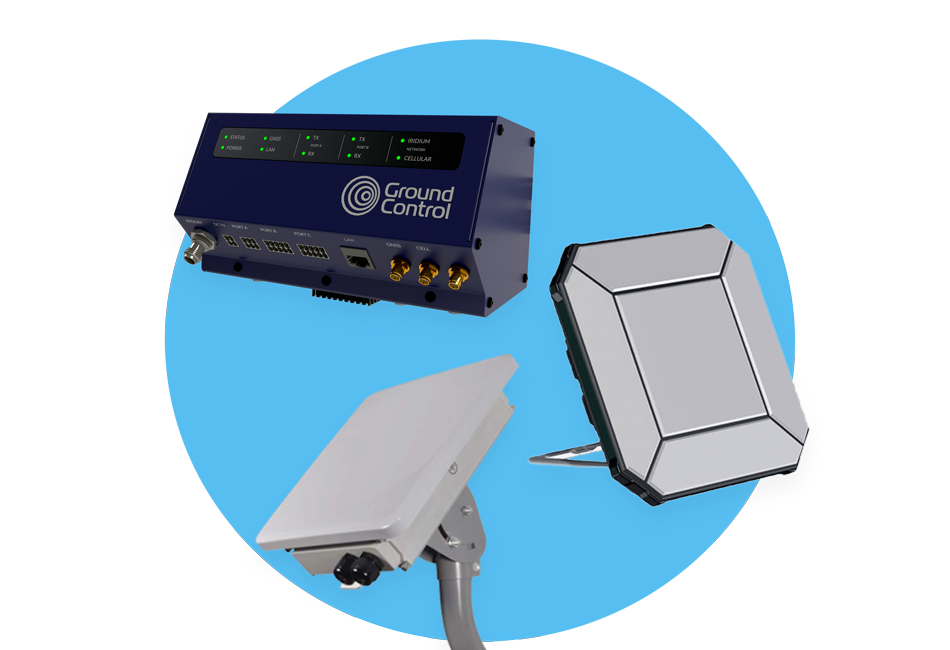
Would you like to know more?
Call or email us, or complete the form, and one of our expert team (we've been doing this for over 20 years) will be in touch to discuss your options.
